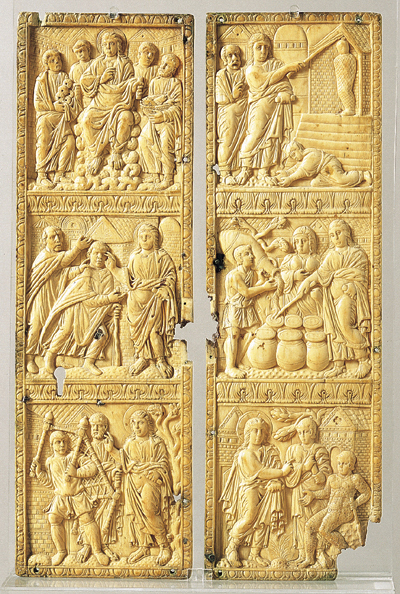Image Details

Courtesy of the trustees of the Victoria & Albert Museum, London
Jesus the magician. This mid-fifth-century, northern Italian, ivory diptych shows Jesus (from top to bottom, starting upper left) multiplying the loaves and fishes (Matthew 14:13–21), restoring a blindman’s sight (Mark 10:46–52), curing the paralytic (Matthew 9:1–8), raising Lazarus (John 11:1–45), turning water into wine at Cana (John 2:1–11) and healing the leper (Matthew 8:1–4).
In the Lazarus and Cana scenes, Jesus carries a wand. The wand, common to early Christian representations of Jesus—but never mentioned in the Bible—reflects the early Christian understanding of Jesus as a magician, and not just a divine savior or teacher. (In all the scenes, Jesus holds a scroll in his left hand, a sign of authority.)
On the reverse—or inside of the hinged diptych—are recesses for wax, into which deceased parishioners’ or saints’ names may have been written.
